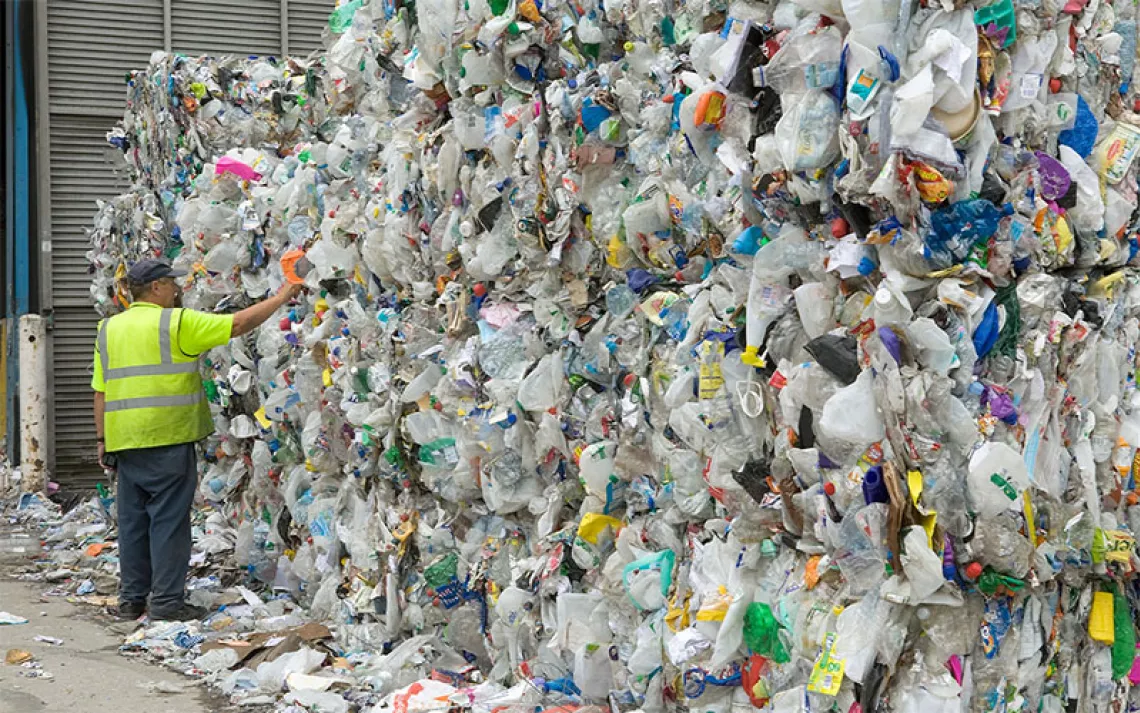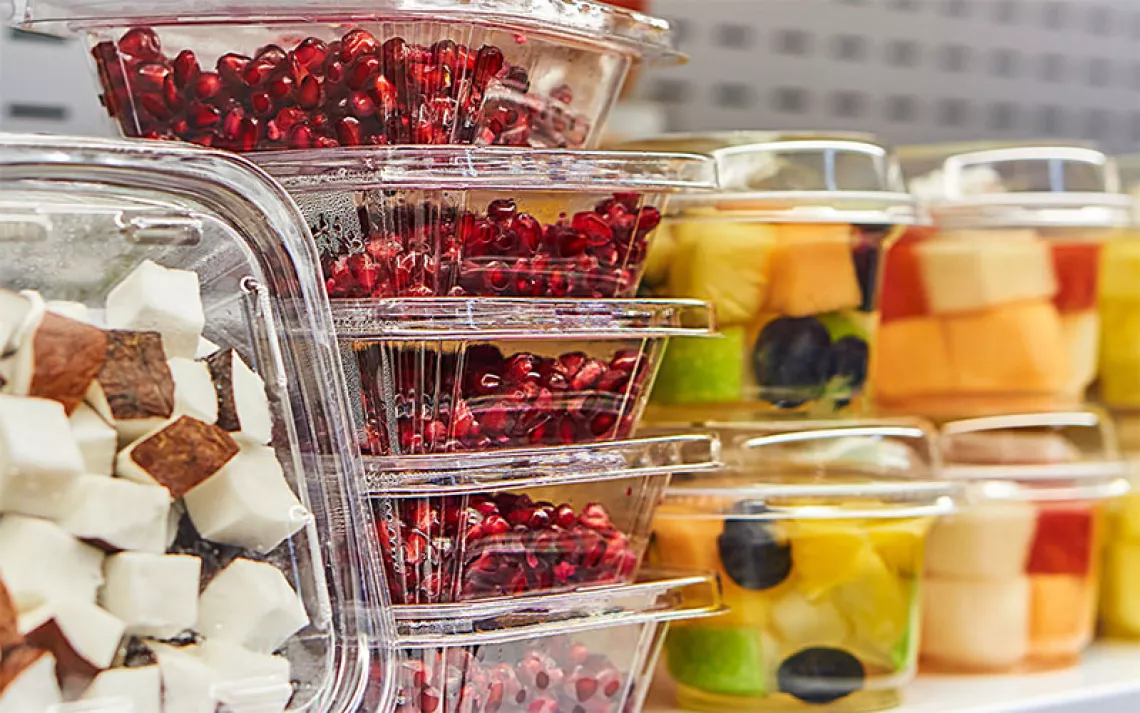Will Nations Finally Create a Global Plastics Treaty?
All eyes are on a UN meeting later this month to address the plastic crisis

Photo by pressdigital/iStock
Plastic is everywhere.
You can find it in the deepest trenches of the ocean, near Mt. Everest's highest peaks, and in raindrops and snowflakes. Plastic is in the air we breathe, in the clothes we wear, and perhaps most worryingly, it's in our bodies.
Researchers investigating the exposure risks of plastic on human development "were unable to find a meaningful control group," said Jane Patton, the plastics and petrochemicals campaign manager at the Center for International Environmental Law. "There is no group of people on the planet that have not been exposed to endocrine-disrupting chemicals largely from plastics."
Now, for the first time, it seems that world governments are moving to do something about plastic’s harms.
In late February, nations will meet at the fifth session of the UN Environment Assembly in Nairobi, Kenya, to discuss the creation of a global plastics treaty. The goal is to create worldwide standards for how to deal with this substance that clogs rivers and streams, chokes marine life, and does not honor national boundaries. One recent study led by researchers from the University of Exeter who used GPS to track plastic waste found that one tracker traversed over 1,700 miles in three months, or the same rough distance that separates Bangor, Maine, from Miami, Florida.
On the table are two distinct approaches. One approach put forward by Japan and India in separate proposals focuses on plastic as a waste problem. A separate proposal by Peru and Rwanda looks at the plastic issue through a more holistic, or lifecycle, approach.
The former approach treats plastic primarily as an issue of marine pollution. The issue, it says, is not how much plastic we're producing but how it's disposed of—or, more precisely, improperly disposed of. Just under 9 million tons of plastic ends up in the world's oceans every year, where it can have devastating impacts on marine life; microplastics can sometimes outnumber plankton. One 2019 study found that the way marine plastic smells can confuse certain fish, which will eat it instead of the food they need to survive. Similarly, the preponderance of beach clean-ups in the 1980s can also trace their origin to the emergence of plastic—85 percent of marine litter is made up of it.
But critics say that focusing on plastic as solely a waste issue is insufficient. Since the 1950s, humans have produced more than 9 billion tons of plastic, much of that single use, with more than half of that total produced since 2000. The vast majority of that—more than three-quarters—has already been discarded, with some 80 percent either winding up in landfills or the environment. To date, only 9 percent of plastic has been recycled, both because certain types of plastic cannot be functionally recycled and because of those that can be, recycling is less cost-effective than producing it from scratch. If we continue to produce plastic at this rate, it raises the question of where all this waste can safely go. And yet, petrochemical companies are on pace to make three times as much plastic in 2050 as they did in 2014.
"If we are focusing on plastic purely as a waste problem, we are completely ignoring all of the other harms that are happening along the plastic supply chain," said Patton. “We’re ignoring the toxic air emissions and pollution that come with plastics production, and we’re ignoring the exposure that folks have to endocrine-disrupting chemicals in the use of plastics.”
Researchers have shown a link to living near the chemical facilities that make plastic with increased rates of a host of harmful health outcomes including asthma, cancer, heart disease, birth defects, and disruption of the endocrine system or the hormonal system that regulates everything from bodyweight to reproduction. Because the chemicals in plastic, such as in food containers, can migrate out of it, these risks also extend to those who use plastic, especially young children.
And then, of course, there's the fact that plastic is a byproduct of oil and gas production.
"I think the environmental justice issues are serious. And I think the health issues are really serious. But overlaying all of that is the massive amount of fossil fuels that are used to make plastics," said Judith Enck, the president of Beyond Plastics and the former EPA regional administrator under President Obama.
A 2018 report by the International Energy Association estimates that direct emissions from the petrochemical sector will increase by 20 percent by 2030 and by 30 percent by 2050, at a time when we need to cut emissions.
The proposal put forward by Peru and Rwanda advocates for a lifecycle approach to the plastic problem with explicit references to plastic's toxicity and its impact on climate change and biodiversity. More than 60 countries have signed on to it, with the exception of the United States, which is among the biggest plastic-producing countries in the world.
The question now is whether the provisions of an agreement forged at the UN Environment Assembly in Nairobi will include legally binding commitments, or get watered down.
"If we do not have this legally binding nature, of a commitment of the international community, it's going to be very hard to tackle a problem only at the national level," said someone with knowledge of the Peru plan who was not authorized to speak on the record. "Because our institutions are not so strong. And it's the mandatory force of international treaties that puts pressure on us."
Already, according to a recent report in Reuters, fossil fuel companies are working behind the scenes to push countries to reject any deal that would limit plastic manufacturing. "We foresee that some countries which are silent now, like the [oil-producing] Arab countries, are going to be vocal," said the Peru expert.
One factor in how negotiations shake out, the expert added, is the pressure put forward by civil society, especially in countries like the United States, Canada, and Australia.
"The petrochemical industry has decided to make a big bet on plastics,” said Enck. “So you can use the fracked gas to make single-use plastic packaging. It is significantly cheaper than recycled-content plastic or cardboard or metal or glass. That's why many consumer-brand products are shifting to more single-use plastic packaging."
At the same time, "Study after study shows that consumers want alternatives to plastic," Enck said.
 The Magazine of The Sierra Club
The Magazine of The Sierra Club



